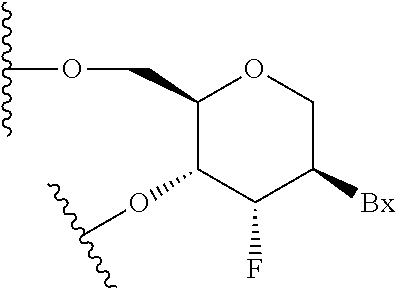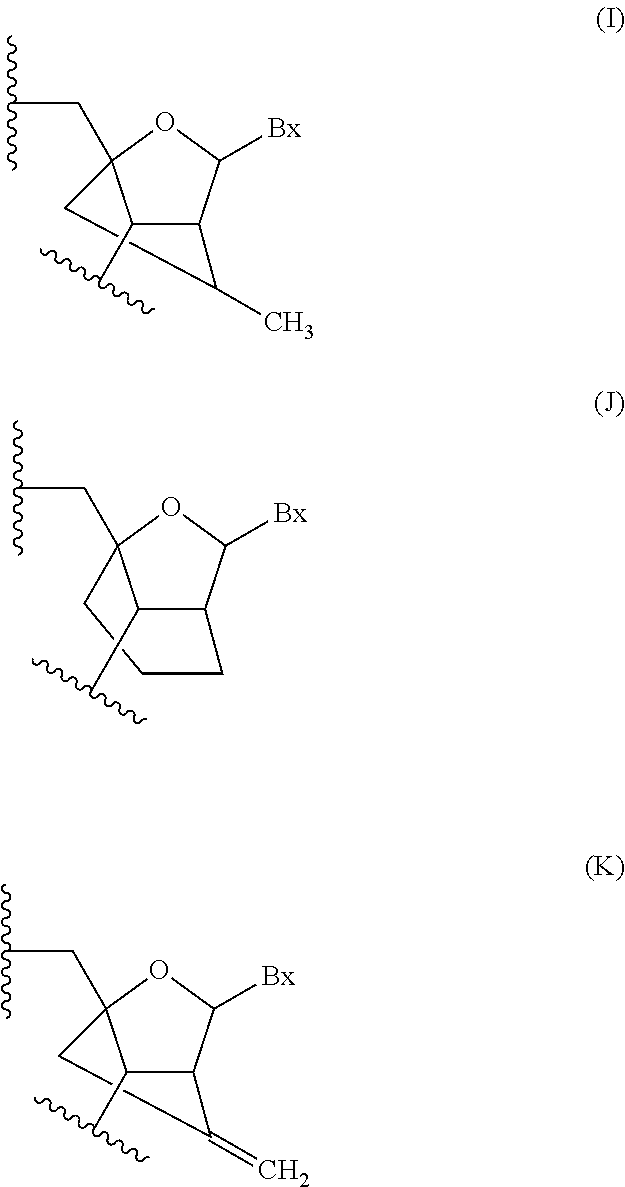Methods for modulating kallikrein (KLKB1) expression
a technology of kallikrein and mrna, which is applied in the field of reducing the expression of kallikrein (klkb1) mrna and protein, can solve the problems of blood vessel occlusion (thrombosis, precipitation life-threatening, and further complicated drug therapy using warfarin), and achieves the reduction of kallikrein protein levels, kallikrein mrna levels, and protein levels
- Summary
- Abstract
- Description
- Claims
- Application Information
AI Technical Summary
Benefits of technology
Problems solved by technology
Method used
Image
Examples
example 1
Antisense Inhibition of Murine Kallikrein mRNA in Mouse Primary Hepatocytes
[0330]Antisense oligonucleotides targeting a murine kallikrein (KLKB1) nucleic acid were designed and tested for their effects on kallikrein mRNA in vitro. Cultured mouse primary hepatocytes at a density of 10,000 cells per well were transfected using Cytofectin reagent with 12.5 nM, 25.0 nM, 50.0 nM, 100.0 nM, and 200.0 nM of antisense oligonucleotide. After a treatment period of approximately 24 hours, RNA was isolated from the cells and mouse kallikrein mRNA levels were measured by quantitative real-time PCR using the murine primer probe set RTS3313 (forward sequence TGCCTGCTGTTCAGCTTTCTC, designated herein as SEQ ID NO: 20; reverse sequence TGGCAAAGTCCCTGTAATGCT, designated herein as SEQ ID NO: 21; probe sequence CGTGACTCCACCCAAAGAGACAAATAAACG, designated herein as SEQ ID NO: 22). Kallikrein mRNA levels were adjusted according to total RNA content, as measured by RIBOGREEN.
[0331]The chimeric antisense oli...
example 2
Antisense Inhibition of Kallikrein mRNA in Rat Primary Hepatocytes
[0333]ISIS 482584 was also tested for its effect on rat kallikrein (KLKB1) mRNA in vitro. Cultured rat primary hepatocytes at a density of 20,000 cells per well were transfected using Cytofectin reagent with 200 nM of antisense oligonucleotide. After a treatment period of approximately 24 hours, RNA was isolated from the cells and rat kallikrein mRNA levels were measured by quantitative real-time PCR using the murine primer probe set RTS3315 (forward sequence TCGGTTGCCCCATGGAT, designated herein as SEQ ID NO:23; reverse sequence GGTGACGACATGGCTTACATTC, designated herein as SEQ ID NO: 24; probe sequence TTTTCCAGCACTTTGCCTTTGCAGACC, designated herein as SEQ ID NO: 25). Kallikrein mRNA levels were adjusted according to total RNA content, as measured by RIBOGREEN.
[0334]Results demonstrated that ISIS 482584 reduced kallikrein mRNA in rat primary hepatocytes by 82%.
example 3
Antisense Inhibition of Kallikrein mRNA In Vivo
[0335]ISIS 482584 was tested for its affect on murine kallikrein (KLKB1) mRNA in vivo.
Treatment
[0336]Six groups of male BALB / c mice each were treated with 2.5 mg / kg, 5.0 mg / kg, 10.0 mg / kg, 20.0 mg / kg, 40.0 mg / kg, or 80.0 mg / kg of ISIS 482584, administered subcutaneously twice a week for 3 weeks (weekly doses of 5.0 mg / kg, 10.0 mg / kg, 20.0 mg / kg, 40.0 mg / kg, 80.0 mg / kg, or 160.0 mg / kg). A control group of BALB / c mice was treated with PBS, administered subcutaneously twice a week for 3 weeks. Two days after the last dose of antisense oligonucleotide or PBS, mice from all groups were anesthetized with 150 mg / kg ketamine mixed with 10 mg / kg xylazine, administered by intraperitoneal injection. Liver was collected for RNA analysis.
RNA Analysis
[0337]RNA was extracted from liver tissue for real-time PCR analysis of kallikrein. Kallikrein mRNA levels were measured using the murine primer probe set (forward sequence ACAAGTGCATTTTACAGACCAGAGTAC, d...
PUM
| Property | Measurement | Unit |
|---|---|---|
| time | aaaaa | aaaaa |
| platelet aggregation | aaaaa | aaaaa |
| size | aaaaa | aaaaa |
Abstract
Description
Claims
Application Information
 Login to View More
Login to View More - R&D
- Intellectual Property
- Life Sciences
- Materials
- Tech Scout
- Unparalleled Data Quality
- Higher Quality Content
- 60% Fewer Hallucinations
Browse by: Latest US Patents, China's latest patents, Technical Efficacy Thesaurus, Application Domain, Technology Topic, Popular Technical Reports.
© 2025 PatSnap. All rights reserved.Legal|Privacy policy|Modern Slavery Act Transparency Statement|Sitemap|About US| Contact US: help@patsnap.com



